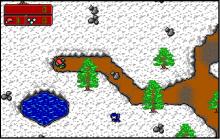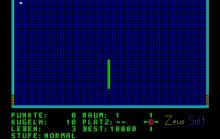Telengard
Press Keyboard right side: Alt+Enter keys to switch to full screen game play, and Alt+Enter keys to return.
How to play Telengard
Each game uses different controls, most DOS games use the keyboard arrows. Some will use the mouse.
Telengard Description
Telengard is a computer-based video game that provides an early example of the dungeon crawl genre. The game, written in 1976 by Daniel Lawrence (1958–2010), was purchased by Avalon Hill in 1982 and made available on multiple computer platforms. These included the Commodore C64, the Apple II+, TRS-80, Atari 400 and Atari 800, and various IBM machines such as the IBM PCjr, and the IBM PC. Telengard is available on Windows and many ports and emulations are available for modern computers and operating systems.
Telengard, written from only 8 kilobytes of memory, offers no final solution for players. It simply provides a gaming platform for players to explore dungeons in real time. It has been referred to as a predecessor to Diablo, and is an early example of a roguelike video game.
Daniel Lawrence modeled Telengard after its predecessor, DND, at Purdue University in 1978. Lawrence rewrote DND in BASIC with only 937 lines of code on a Commodore PET 2001 computer, and called it Telengard. Since the maps presented a memory capability problem, he "reduced the number of dungeons from three [in DND] to one, and ... had the game generate the map algorithically". This allowed the early versions of the game to fit into 8 kilobytes (kB) of memory, later expanded to a "luxurious" 32 kB of memory. Lawrence developed the game to be played in real time due to limited amount of time on computers for play-testers. The intent was to "get them moving and not hog the terminals".
After Avalon Hill purchased the game in 1982, Telengard became one of its "first round of computer game releases" for the Apple II+ and TRS-80 system, as BASIC was similar in these systems. Since the internal variables of the Atari 400/800 were different than these systems, its release took longer. C was used to program the IBM-PC version of Telengard
















